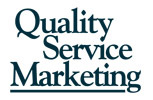As a marketer, I know the importance of effective complaint handling and recovery on consumer satisfaction and loyalty. So I was curious to see how two different companies with well known brands would handle me as a consumer with a problem.
This wasn’t a test for its own sake – I actually had problems with two products of which I’ve been a long-time, loyal consumer. And surprisingly (or not), my experience was different in each case.
Situation #1
I needed to replace my Maybelline eyeliner pen and couldn’t find it anywhere after trying several different stores. So I e-mailed Maybelline’s Consumer Affairs and here’s their reply:
“Thank you for your interest in Eye Express Easy Lining Pen. This product is no longer available, and we have no way of obtaining it for you to purchase. We suggest you try Line Stylist, which is available at stores that carry Maybelline New York products.
We understand the frustration you must feel concerning the disappearance of a product that you had been using faithfully. It is never easy for us to make the decision to discontinue any of our products or shades. We truly regret any inconvenience this may have caused you.”
At least they were empathetic and apologetic. But that’s all. There was no link to tell me where to find the suggested alternate product and no special offer or coupon to encourage me to try it.
Marketing Note: OK, as consumers we may be unrealistic in expecting a little extra for the inconvenience. In marketing, the concept is known as “recovery” – an added incentive to maintain the customer’s relationship. But the bottom line here is there is no reason for me to continue my brand loyalty. My favorite product is no longer available, and there’s no motivation for me to try another product within the brand. So goodbye, Maybelline.
Situation #2
I opened a box of Post Grape-Nuts cereal and it tasted stale. (Hard to believe, I know … but I eat Grape-Nuts in yogurt nearly everyday, and this time it didn’t taste quite right.) I opened another box that I had in my pantry, and it was same. The “best when used by” date was more than six months away. Maybe I just had a bad batch?
So I called Kraft (who owns the Post brand). The Customer Service Rep was also apologetic. I don’t quite remember how she said it, but she managed to genuinely acknowledge my complaint while at the same time reassure me of their quality standards. And then she offered recovery – Post would send me coupons so I could replace the product. (A letter of apology, with the coupons, arrived within a week.)
Based on this experience, will I stay loyal to Post Grape-Nuts? You betcha!




